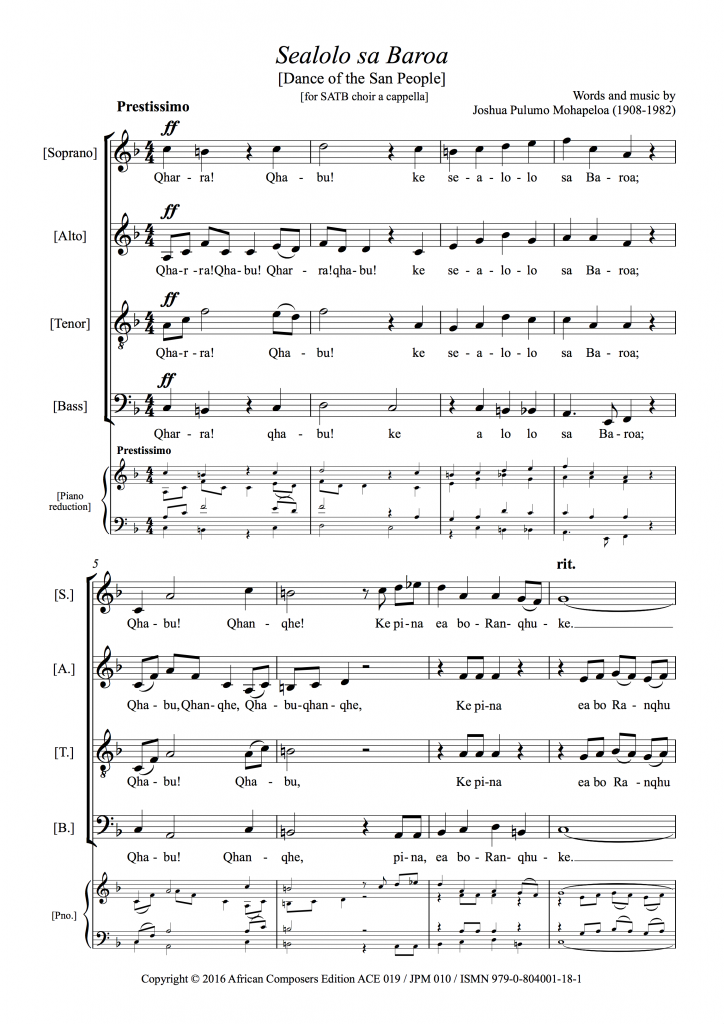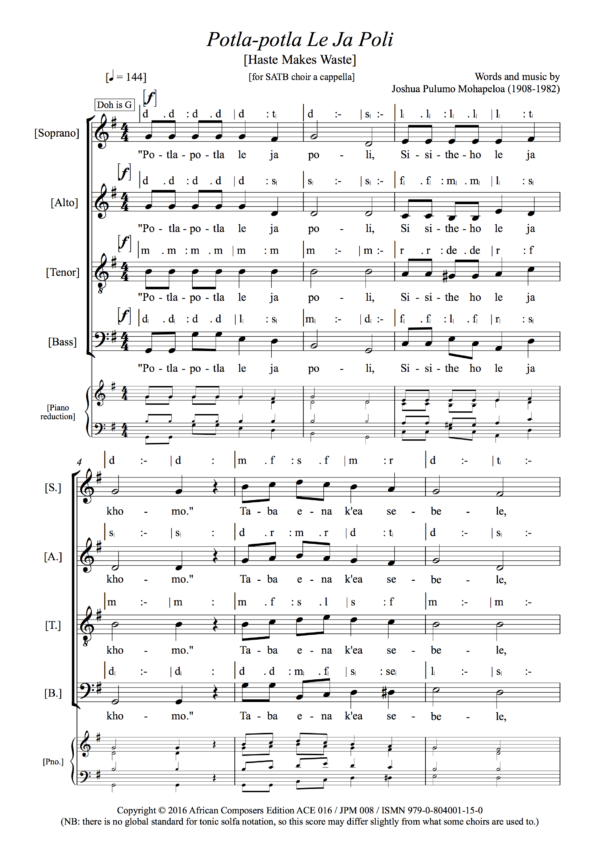Sealolo Sa Baroa

R39.00
Mohapeloa wrote ‘Sealolo sa Baroa’ in the early 1930s, publishing it in Morija in 1935 as song No. 10 of 32 in his first song collection, Meloli le Lithallere tsa Afrika. The song celebrates the people who populated large areas of Lesotho before they were driven out in the 19th century, a people nowadays known as the San people, but in Mohapeloa’s day, Bushman (‘Baroa’) or Bushmen (‘Saroa’). Their language was full of clicks and is remembered in Lesotho chiefly through place names, which the composer quotes in this song. San people were nomadic, their cave paintings and hunting bows miraculously surviving their virtual extinction. One of the bows eventually became the Lesotho national instrument, the lesiba. Mohapeloa plays with the clicks which San languages bequeathed to later indigenous languages in southern Africa, especially the palatal ‘q’ and aspirated palatal click ‘qh’ that occur in Sesotho, using the sound of the language to create accompanimental motifs over which the Sopranos sing soaring melodic lines. The song belongs to a category in Mohapeloa’s output where events, places, or people in Lesotho are commemorated, giving voice to a sometimes vanished heritage in song. At 84 bars this is the longest of Mohapeloa’s early choral works and his most experimental at that point.
Related works
Potla-potla Le Ja Poli
R39.00



